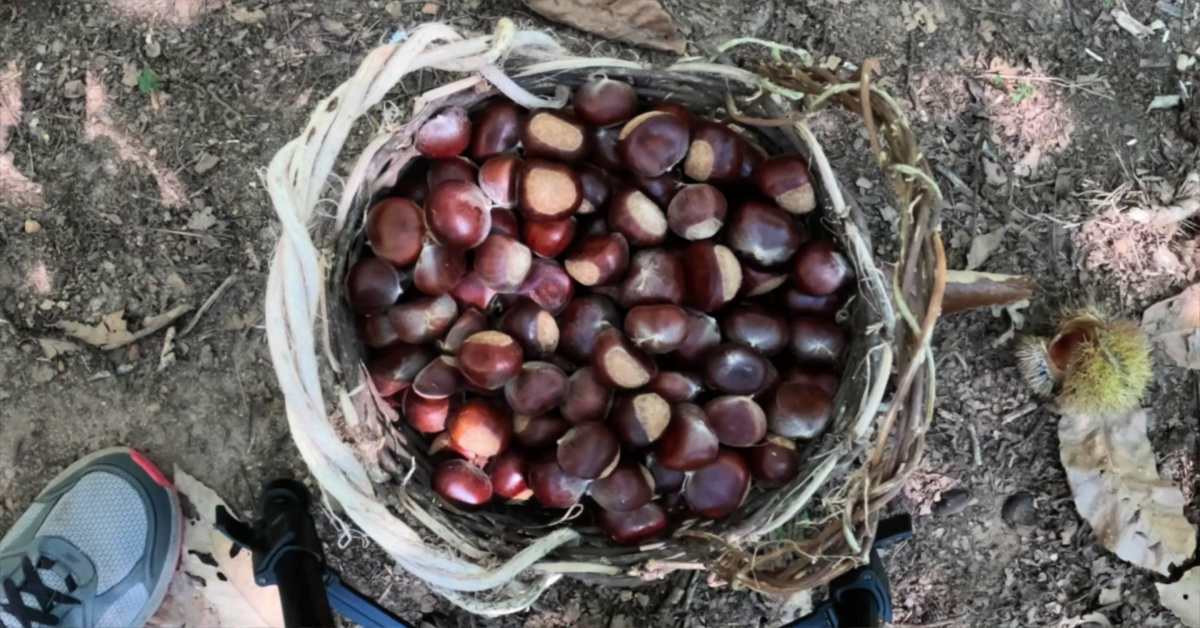Before the early half of the 1900s, the American chestnut (Castanea dentata) dominated the Eastern forests. One out of every four hardwoods was a chestnut. For many folks, chestnuts weren’t just a snack, they were everyday food, fattening hogs and feeding children alike.
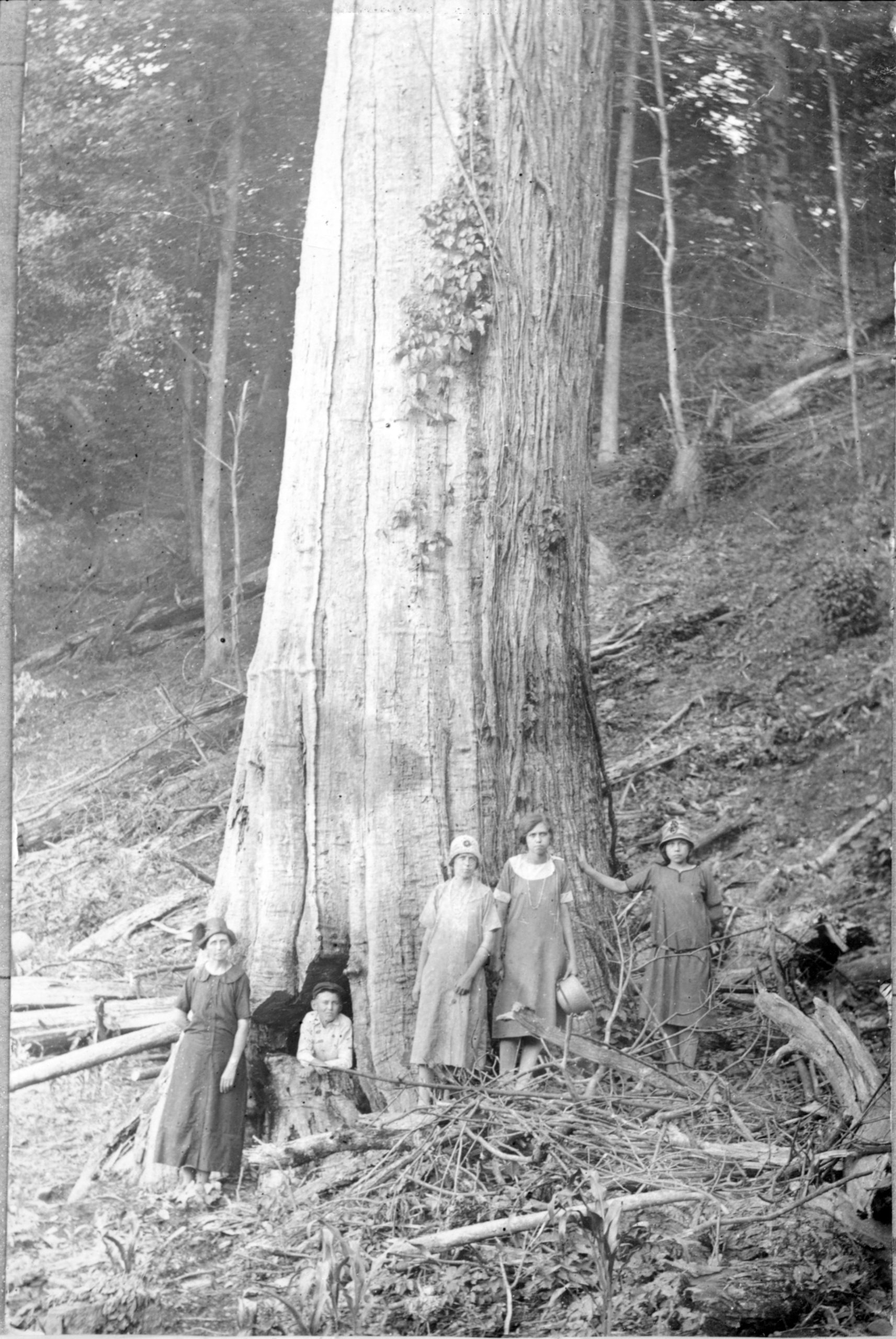
Jim and Caroline Walker Shelton’s family standing by large chestnut tree below Tremont Falls, circa 1920
That all started to change in 1904, when a mysterious fungus (Cryphonectria parasitica) was first documented at the Bronx Zoo in New York. Within a few decades, the blight raced through the forests. By the 1930s and 40s, more than 99% of the mature American chestnuts had died — over 3.5 billion trees lost in less than 40 years.
Today, when we refer to chestnuts in America, we’re usually talking about the American chestnut’s cousin: the Chinese chestnut (Castanea mollissima). It’s a much smaller tree, rarely topping 40 to 60 feet compared to the towering 100-foot giants of the American chestnut. But even in its smaller form, it produces reliable crops of sweet, starchy nuts that carry on the tradition.
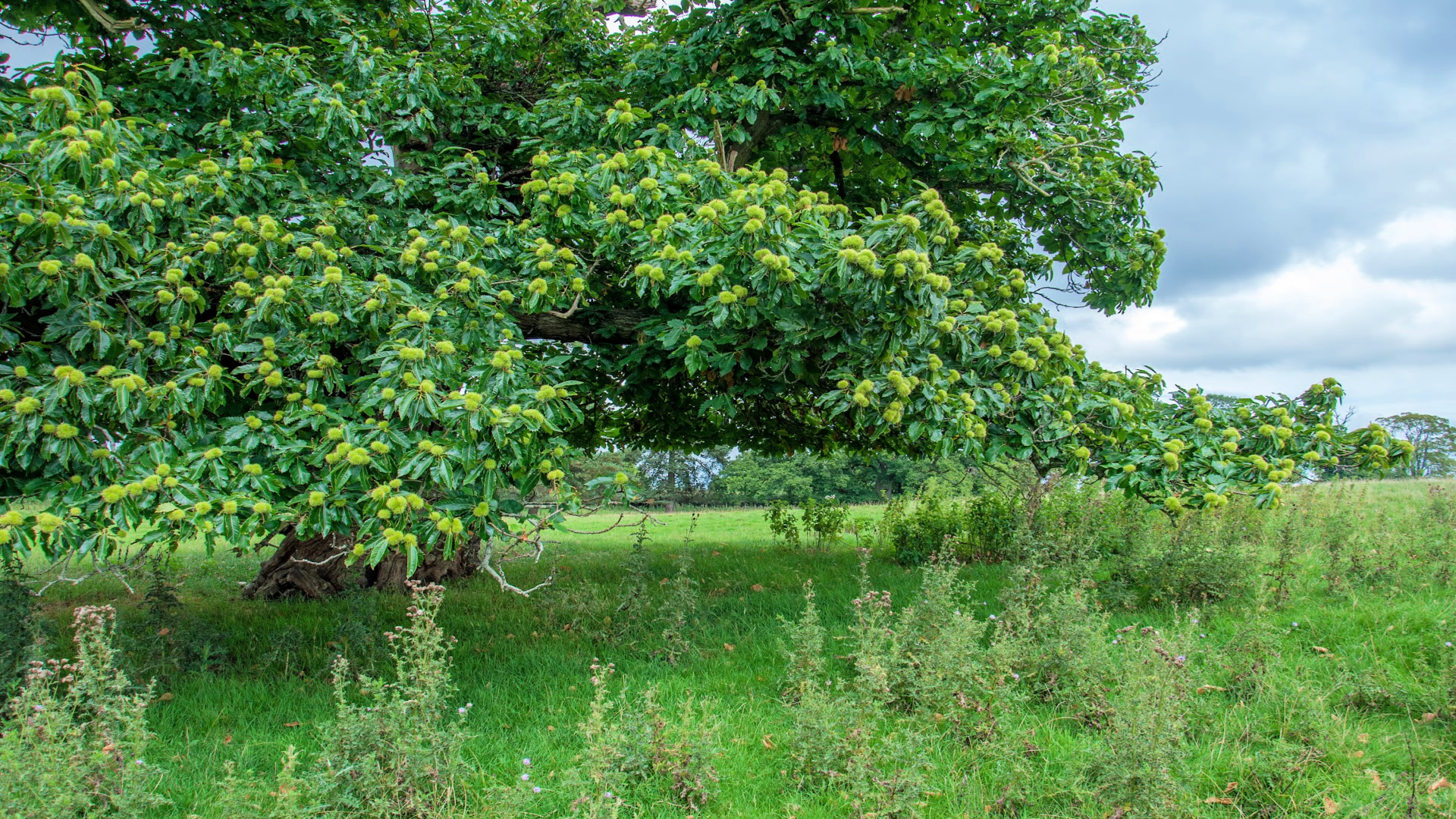
Why Chestnuts Matter
Chestnuts aren’t like most nuts. They act more like a grain — high in starch, naturally sweet, and incredibly versatile.
Nutritional benefits:
- Naturally gluten free
- Low in fat, rich in complex carbohydrates
- The only nut that contains vitamin C
- A slow digesting starch that helps steady blood sugar
- Packed with potassium, iron, calcium, magnesium, phosphorus, zinc, manganese, and B vitamins
A 30 gram serving provides about 20% of your daily vitamin C needs — a real friend to the immune system, especially in the fall and winter.
⚠️ A quick safety note: Only true chestnuts are edible. They grow inside sharp, spiny burrs with 2–3 nuts inside, each with a little fuzz and a pointed tip. Horse chestnuts (Aesculus hippocastanum) are poisonous, grow in smooth husks with uneven, knobby protrusions and usually hold just one big glossy seed. Always be sure you’ve got the real thing.
Gathering Chestnuts
When chestnuts start dropping, I head out with gloves and a bucket. The burrs are sharp, so I use my boot to press them open (and try to remember to bring gloves).
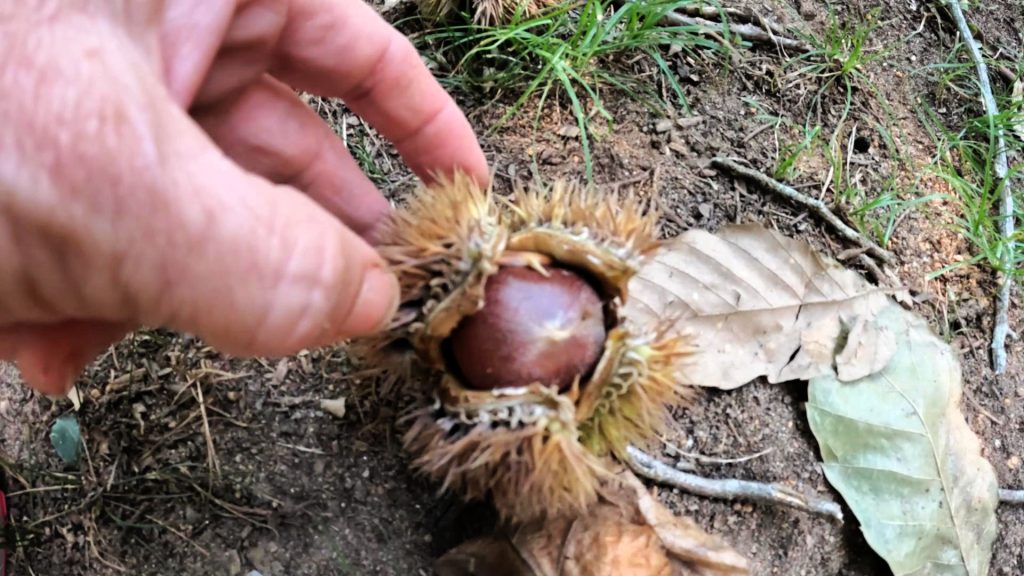
Preparing the Chestnuts
Once gathered, I put them in a large bin and fill it with cold water. This gives them a rinse and also makes the bad ones float to the top.
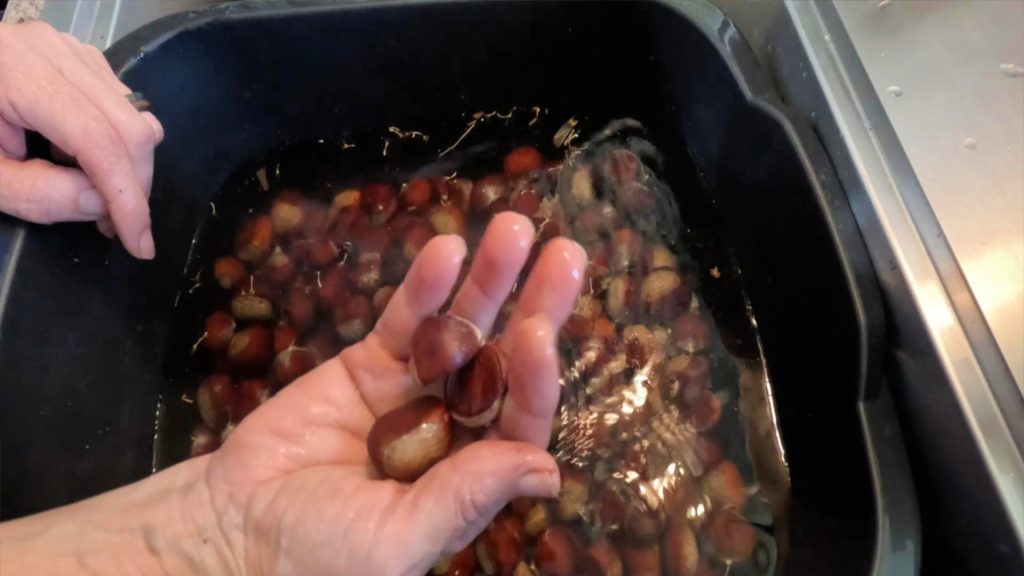
For removing the entire chestnut easily, I find that scoring them across one side works best. I use scissors to do this and it goes pretty quick.
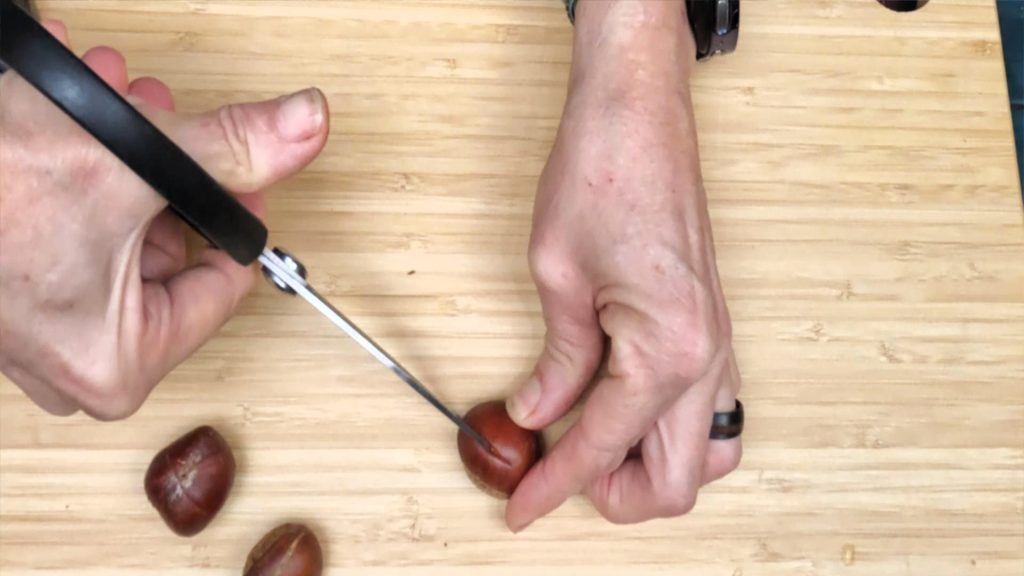
Roast at 400°F for about 25 minutes. The shells will split where they were scored (and your kitchen will smell really good).
After roasting, I put half in a sealable container and let them steam in their own heat and humidity. I leave the rest in the oven that has been turned off but is still warm.
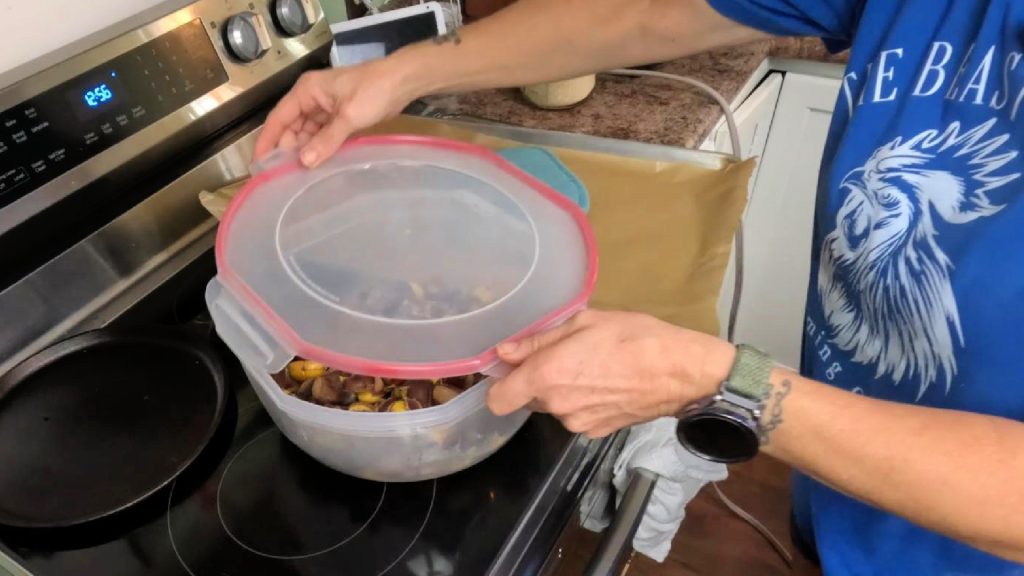
Take a few from the container at a time (be careful, they’re hot!) and remove both the shell and the pellicle (that thin papery skin that clings to the nut).
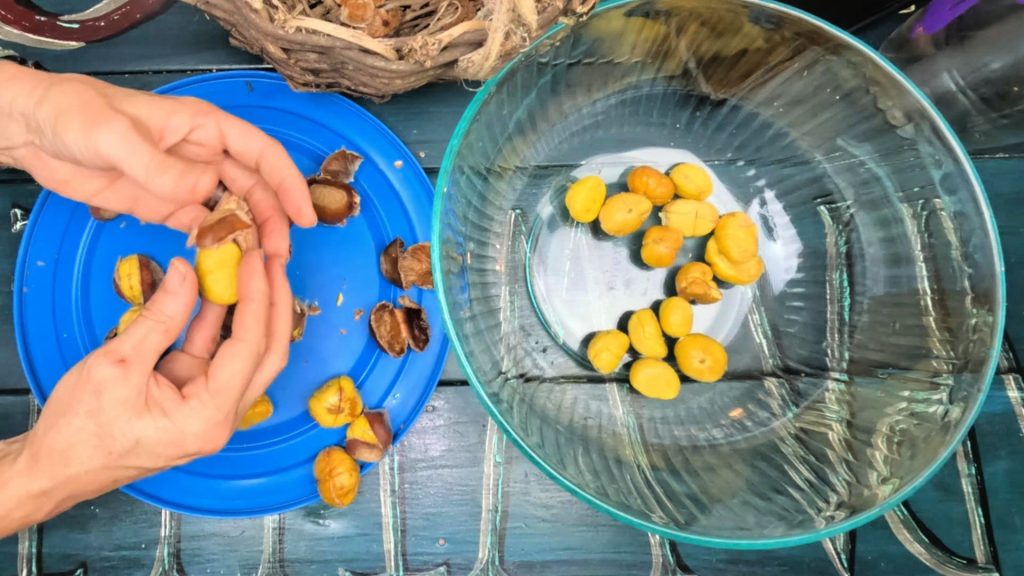
From Nut to Flour
Grind into paste — run peeled chestnuts through a blender until it’s a coarse paste. (I’ve learned not to just chop them, once dried, they turn into little rocks and can ruin a blender.)
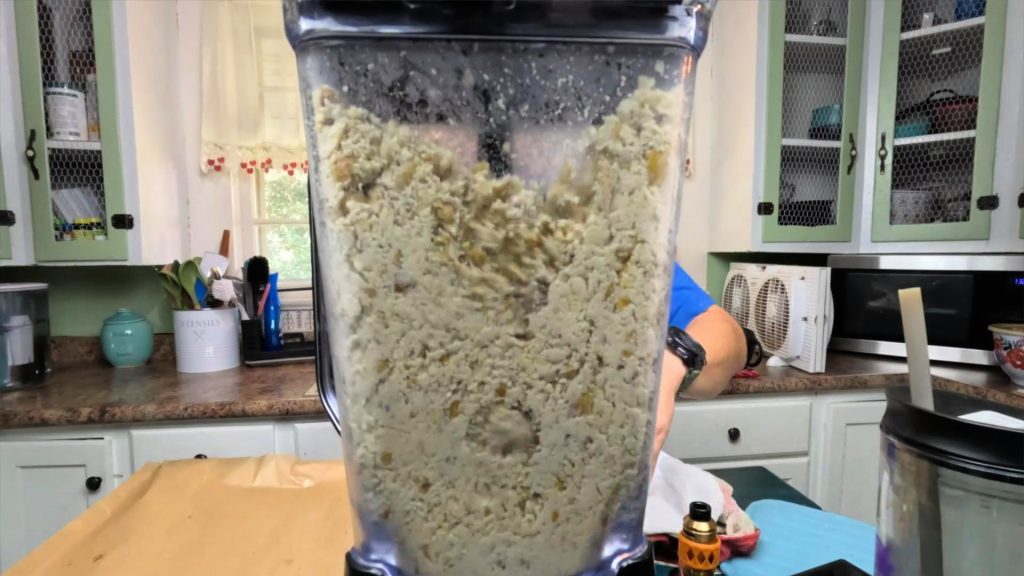
Dry completely — spread paste on a parchment-lined pan and dehydrate at 125°F for 24–36 hours until bone dry, stirring every few hours to make sure that all of the moisture is gone. If your oven doesn’t go that low, set it to the lowest temp with the door cracked.
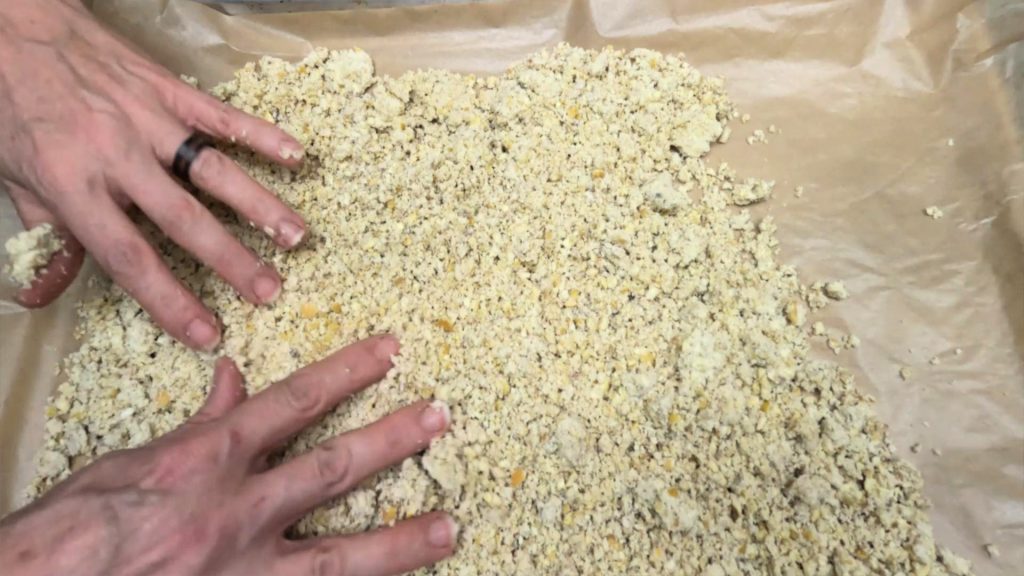
Grind into flour and sift— use a coffee grinder or mill to get it into a smooth flour then sift.
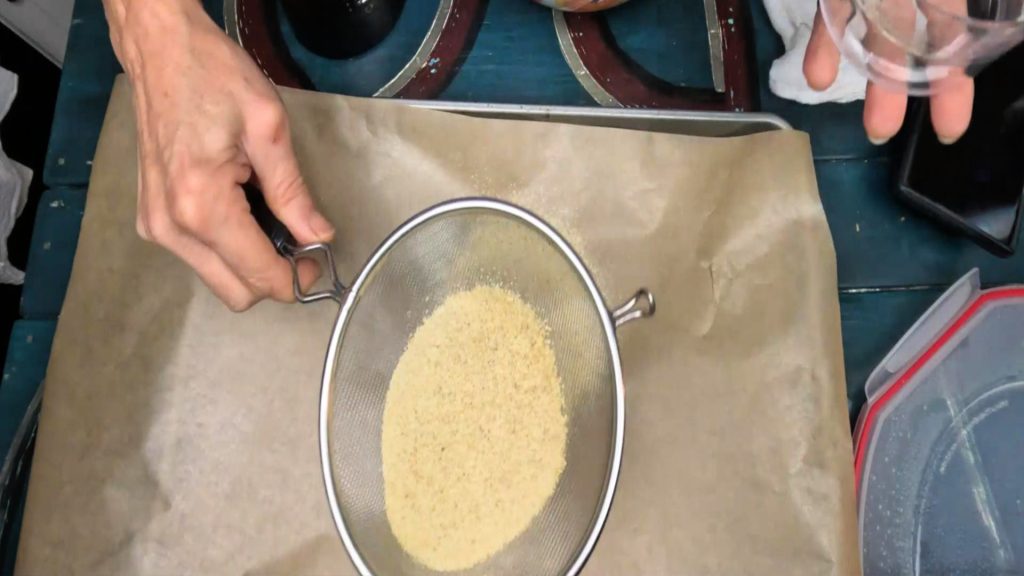
It’s a little work, but worth it.
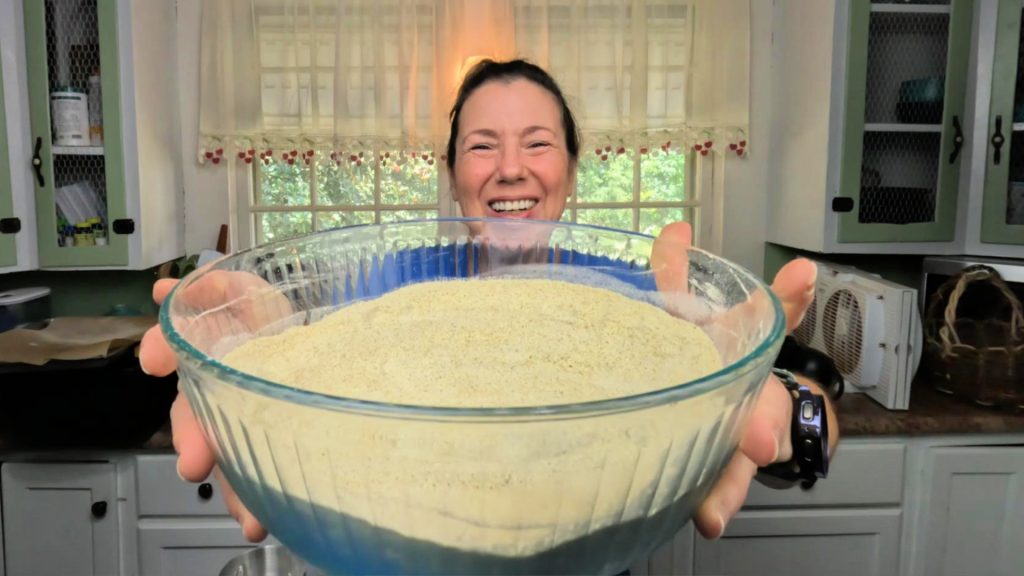
Storage:
- Pantry (airtight jar): about 1 month
- Refrigerator: 2–3 months
- Freezer: up to 6 months
Moisture is the main enemy.
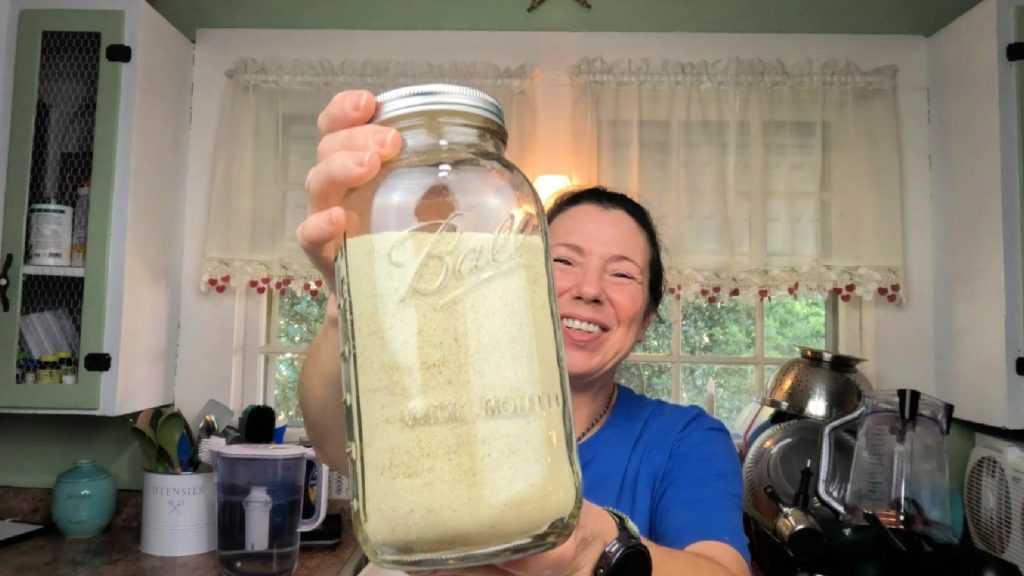
Flatbread Experiment
To really test the flour, I made three versions of flatbread (I will put a pdf to download for the recipes):
100% wheat flour
This one was very pliable and perfect for wraps.
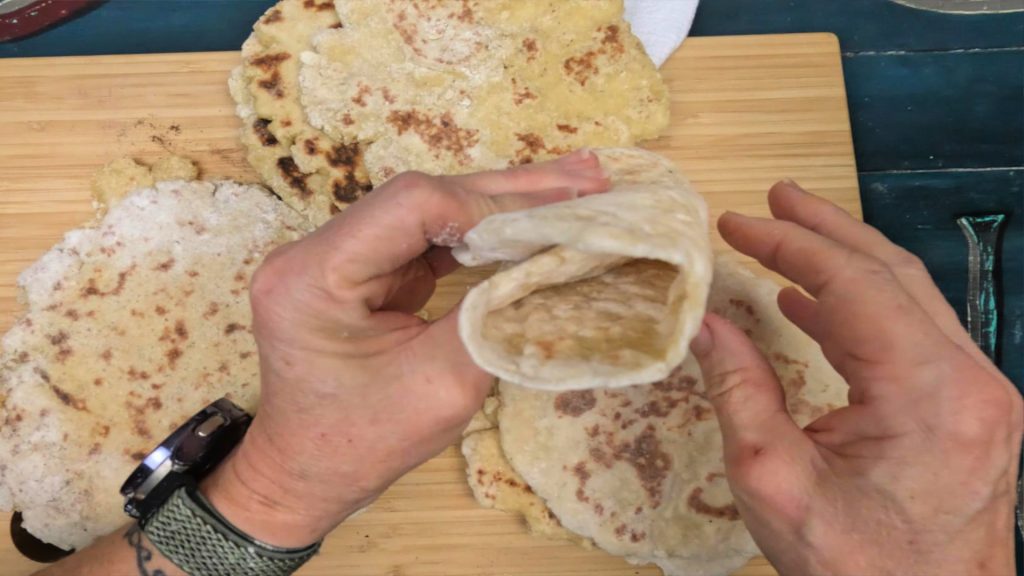
50% chestnut flour + 50% wheat flour
This one had a very rustic, full flavor, but it wouldn’t bend
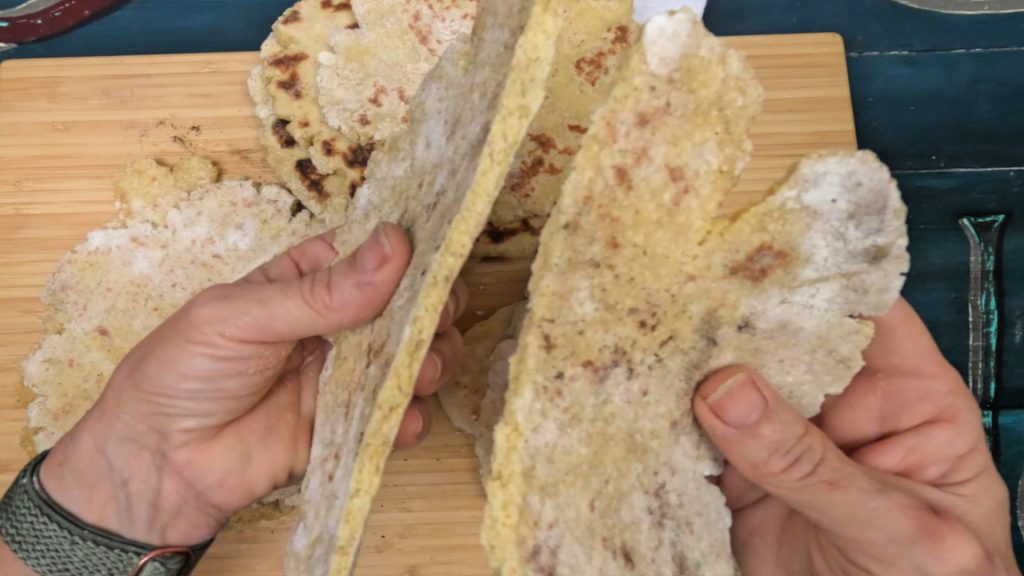
30% chestnut flour + 70% wheat flour
This one was the perfect blend (pun intended) of pliable and flavorful. It could be used as a wrap but still carried the chestnut nuttiness.
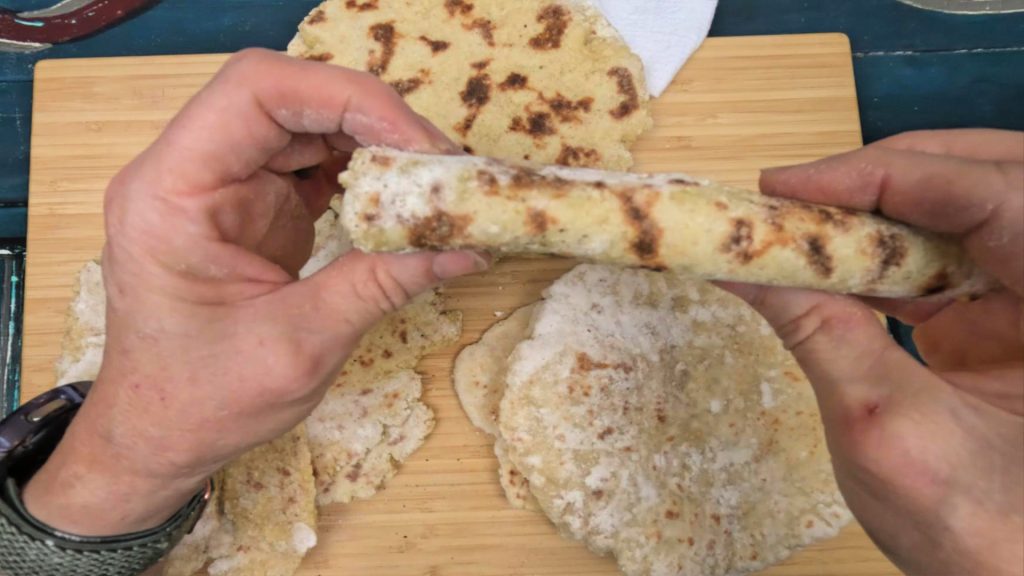
Side by side, you could really see the difference. That 30% mix was the winner.
Other Ways to Use Chestnut Flour
Flatbread is just the start. Chestnut flour shines in:
- Pancakes (naturally sweet without extra sugar)
- Cookies and holiday cakes
- Rustic breads, stuffings, and even goldenrod fritters with muscadine glaze
- As a thickener in soups or gravies
📄 Free Download
Want to keep this recipe handy? Here’s a printable PDF of today’s recipe and instructions:
👉 Download the Chestnut Flatbread Recipe:
Watch the Full Episode
I filmed this whole journey — from gathering chestnuts on the ground to roasting, peeling, grinding, and finally cooking up flatbread. You can watch the full episode right here:
Welp, that’s all I got for yall today. I sure do appreciate you stopping by and reading along!!
